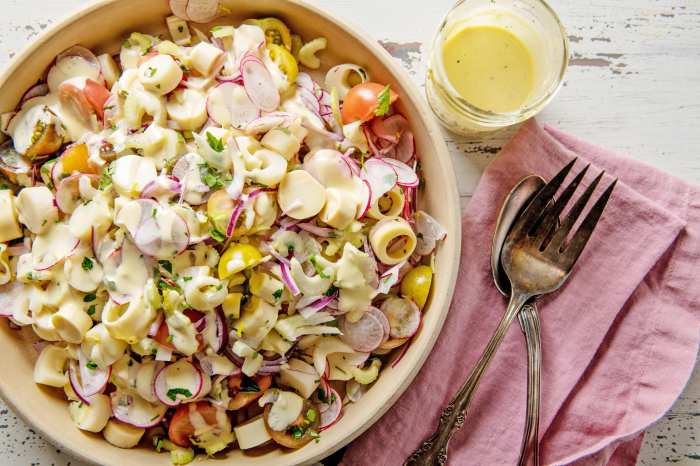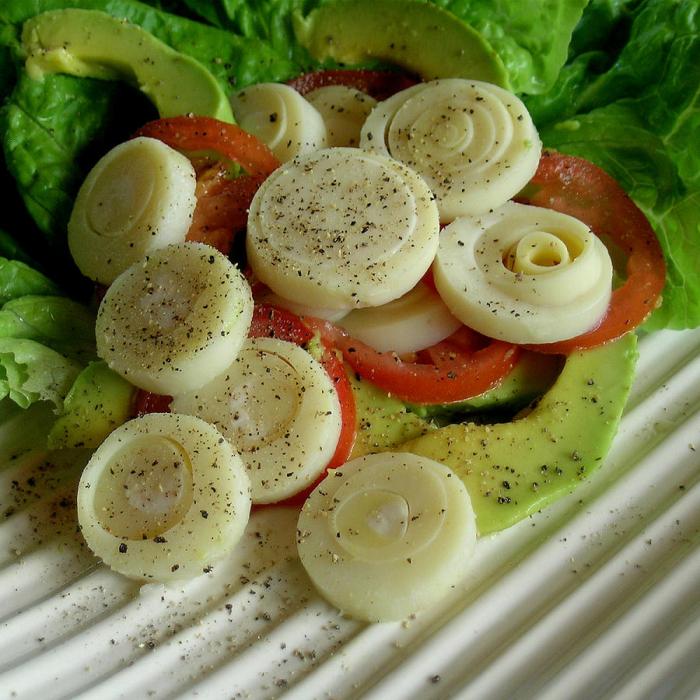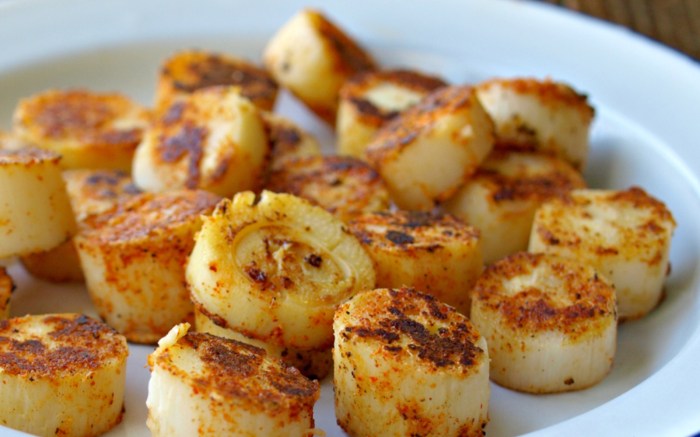Hearts of palm recipes offer a unique and delicious way to incorporate this versatile ingredient into your culinary repertoire. Hearts of palm, the tender inner core of certain palm trees, boasts a mild, slightly sweet flavor and a satisfyingly crisp texture.
They are a great source of fiber, potassium, and other essential nutrients, making them a healthy and flavorful addition to any meal.
From refreshing salads to hearty soups and flavorful stir-fries, hearts of palm can be enjoyed in a variety of ways. This guide will explore the diverse culinary uses of hearts of palm, providing you with a collection of recipes that showcase their versatility and unique flavor profile.
Introduction to Hearts of Palm
Hearts of palm are a unique and delicious vegetable that comes from the inner core of certain palm trees. They are a popular ingredient in various cuisines worldwide, known for their delicate texture, mild flavor, and versatility in cooking.
Origin and Characteristics
Hearts of palm originate from the unopened, tender buds of several palm tree species, primarily the acai, peach, and assai palms. These buds are harvested before they fully mature and develop into leaves. They are then processed and packaged for consumption.
The heart of palm has a firm yet tender texture, similar to artichoke hearts, and a mild, slightly sweet flavor. It is naturally low in calories and fat, making it a healthy and flavorful addition to various dishes.
Nutritional Value and Health Benefits
Hearts of palm are a good source of several essential nutrients, including:
- Fiber:Hearts of palm are rich in dietary fiber, which is beneficial for digestive health and promoting satiety. It helps regulate blood sugar levels and can aid in weight management.
- Potassium:This mineral is crucial for maintaining healthy blood pressure and electrolyte balance. Potassium is also important for muscle function and nerve transmission.
- Vitamin C:Hearts of palm are a source of vitamin C, a powerful antioxidant that supports immune function and collagen production.
- Iron:This mineral is essential for red blood cell production and oxygen transport throughout the body.
Types of Hearts of Palm
There are various types of hearts of palm available, each with its unique characteristics and flavor profiles.
- Acai Palm:This variety is known for its firm texture and slightly sweet flavor. It is commonly used in salads and as a substitute for artichoke hearts.
- Peach Palm:This type has a more delicate texture and a mild, slightly nutty flavor. It is often used in stir-fries, soups, and pasta dishes.
- Assai Palm:This variety is less common but has a similar flavor and texture to acai palm. It is often used in Brazilian cuisine.
Culinary Uses of Hearts of Palm

Hearts of palm, the edible core of certain palm trees, are a versatile ingredient that can be incorporated into a wide range of dishes. Their unique texture and mild flavor make them a perfect addition to salads, soups, stews, and even pasta dishes.
They can be enjoyed raw, grilled, sautéed, or pickled, offering a variety of culinary possibilities.
Popular Dishes Featuring Hearts of Palm
Hearts of palm are a popular ingredient in various cuisines around the world, showcasing their versatility and adaptability to different flavors and cooking styles. Here are some examples of popular dishes featuring hearts of palm:
- Brazilian Cuisine:In Brazil, hearts of palm are a staple ingredient in many dishes, including “Salpicão,” a cold salad featuring hearts of palm, chicken, vegetables, and a creamy dressing, and “Moqueca,” a seafood stew with coconut milk, hearts of palm, and other vegetables.
- Mediterranean Cuisine:Hearts of palm are often used in Mediterranean salads, adding a crunchy texture and a mild, slightly sweet flavor. They are also incorporated into pasta dishes, such as “Pasta with Hearts of Palm and Shrimp,” and served with grilled seafood.
- Asian Cuisine:In Asian cuisine, hearts of palm are used in stir-fries, soups, and salads. They are often paired with other vegetables, tofu, and meat, adding a refreshing and slightly sweet element to the dish.
Texture and Flavor Profile of Hearts of Palm
Hearts of palm possess a unique texture and flavor profile that makes them a distinctive ingredient in culinary creations.
- Texture:Hearts of palm have a firm yet tender texture, similar to that of asparagus or artichoke hearts. Their crispness adds a satisfying crunch to salads and other dishes, while their delicate texture allows them to absorb flavors without becoming mushy.
- Flavor:Hearts of palm have a mild, slightly sweet flavor, with a hint of nuttiness. Their subtle taste allows them to complement a variety of flavors, making them a versatile ingredient in both savory and sweet dishes. They can be enjoyed on their own or used to enhance the flavor of other ingredients.
Hearts of Palm Recipes

Hearts of palm are a versatile ingredient that can be used in a variety of dishes. They have a mild, slightly sweet flavor and a firm texture that holds up well to cooking. Hearts of palm are also a good source of fiber and potassium.
Hearts of Palm Recipes
Here are some delicious and easy hearts of palm recipes:
| Recipe Name | Ingredients | Instructions | Notes |
|---|---|---|---|
| Classic Hearts of Palm Salad |
|
|
|
| Hearty Hearts of Palm Soup |
|
|
|
| Unique Hearts of Palm Stir-Fry |
|
|
|
| Refreshing Hearts of Palm Ceviche |
|
|
|
Cooking Techniques and Tips
Hearts of palm, with their delicate texture and mild flavor, require gentle cooking methods to preserve their integrity and enhance their natural sweetness. Here’s a guide to best practices for preparing these versatile vegetables.
Preparing Hearts of Palm, Hearts of palm recipes
Hearts of palm are typically sold canned or frozen, with minimal preparation needed before cooking. Canned hearts of palm are ready to use after draining and rinsing. Frozen hearts of palm, however, require thawing before cooking.
- Canned Hearts of Palm:Drain the hearts of palm in a colander, then rinse them under cold water to remove any excess brine or liquid. Pat them dry with paper towels.
- Frozen Hearts of Palm:Thaw frozen hearts of palm in the refrigerator overnight or by placing them in a bowl of cold water for about 30 minutes. Once thawed, drain and pat dry.
Optimizing Texture and Flavor
Hearts of palm can be enjoyed raw, but cooking them enhances their flavor and texture. The optimal cooking method depends on the desired outcome.
- Sautéing:Sautéing hearts of palm in a pan with olive oil or butter adds a light caramelization and enhances their natural sweetness. Sauté for a few minutes, ensuring they remain slightly crisp.
- Grilling:Grilling hearts of palm imparts a smoky flavor and adds char marks. Marinate them in a flavorful sauce before grilling for added depth.
- Roasting:Roasting hearts of palm in the oven with herbs and spices creates a tender and flavorful side dish. Toss them with olive oil, salt, pepper, and your favorite herbs before roasting.
Common Mistakes to Avoid
While hearts of palm are relatively easy to prepare, some common mistakes can affect their texture and flavor.
- Overcooking:Overcooking hearts of palm can lead to a mushy texture. Cook them just until tender, which usually takes a few minutes.
- Using Too Much Heat:High heat can cause hearts of palm to become tough and rubbery. Cook them over medium heat to ensure even cooking.
- Ignoring Seasoning:Hearts of palm have a mild flavor, so seasoning them well is essential. Add salt, pepper, and herbs to enhance their taste.
Incorporating Hearts of Palm into Dishes
Hearts of palm’s versatility allows them to be incorporated into various dishes.
Understand how the union of drug dealer simulator 2 recipes can improve efficiency and productivity.
- Salads:Hearts of palm add a refreshing crunch and unique texture to salads. Combine them with other vegetables, fruits, and dressings for a balanced and flavorful salad.
- Soups and Stews:Add hearts of palm to soups and stews for a hearty and nutritious meal. Their delicate flavor complements various broths and ingredients.
- Pasta Dishes:Hearts of palm can be incorporated into pasta dishes as a substitute for meat or seafood. Their firm texture holds up well in pasta sauces and provides a unique flavor.
- Appetizers:Hearts of palm can be used in appetizers, such as skewers, dips, and spreads. Their mild flavor allows them to be paired with various ingredients and sauces.
Serving Suggestions and Pairings
Hearts of palm, with their delicate texture and mild flavor, lend themselves beautifully to a variety of serving suggestions and pairings. Whether you’re creating a light and refreshing salad or a hearty and flavorful main course, hearts of palm offer a unique culinary canvas for your creativity.
Pairing Hearts of Palm with Complementary Ingredients and Flavors
Hearts of palm pair well with a wide range of flavors and ingredients, making them a versatile addition to any dish.
- Fresh Herbs:The mildness of hearts of palm complements the bright flavors of fresh herbs like basil, cilantro, dill, and parsley.
- Citrus Fruits:The acidity of citrus fruits, such as lemon, lime, and orange, cuts through the richness of hearts of palm and adds a refreshing touch.
- Nuts and Seeds:Toasted nuts and seeds, like almonds, walnuts, pumpkin seeds, and sunflower seeds, provide a satisfying crunch and nutty flavor that complements the texture of hearts of palm.
- Spicy Ingredients:Hearts of palm can handle a touch of heat. Consider adding chili flakes, jalapeno peppers, or sriracha sauce for a spicy kick.
- Vinegars and Dressings:A light vinaigrette or a creamy dressing can enhance the flavor of hearts of palm. Try balsamic vinegar, red wine vinegar, or a Dijon mustard vinaigrette.
Versatility of Hearts of Palm in Culinary Applications
Hearts of palm can be enjoyed in a variety of culinary applications, showcasing their versatility in both savory and sweet dishes.
- Salads:Hearts of palm are a popular addition to salads, adding texture and a subtle flavor. They can be enjoyed in classic salads, like Caesar salad, or in more creative combinations, such as salads with grilled chicken or seafood.
- Appetizers:Hearts of palm can be used to create delicious appetizers, such as grilled hearts of palm skewers with a dipping sauce or hearts of palm croquettes.
- Main Courses:Hearts of palm can be incorporated into main courses, such as pasta dishes, stir-fries, and curries. Their mild flavor makes them a good base for bold sauces and spices.
- Soups and Stews:Hearts of palm can add texture and a subtle flavor to soups and stews. They can be added to vegetable soups, creamy soups, or hearty stews.
- Sandwiches and Wraps:Hearts of palm can be used as a filling for sandwiches and wraps, adding a refreshing and healthy element.
Creative Ways to Serve Hearts of Palm
There are many creative ways to serve hearts of palm, making them a visually appealing and flavorful addition to any meal.
- Grilled Hearts of Palm Skewers:Grill hearts of palm skewers with your favorite vegetables, such as bell peppers, onions, and zucchini, for a healthy and flavorful appetizer or side dish.
- Hearts of Palm Salad with Grilled Shrimp:Combine hearts of palm with grilled shrimp, fresh herbs, and a light vinaigrette for a refreshing and flavorful salad.
- Hearts of Palm Fritters:Combine hearts of palm with herbs, spices, and a binder, such as flour or breadcrumbs, and fry them until golden brown for a delicious appetizer or side dish.
- Hearts of Palm Pasta Salad:Combine hearts of palm with cooked pasta, vegetables, and a creamy dressing for a satisfying and flavorful pasta salad.
- Hearts of Palm Ceviche:Marinate hearts of palm in citrus juices, onions, and cilantro for a refreshing and flavorful ceviche.
Last Word: Hearts Of Palm Recipes

Whether you’re a seasoned chef or a home cook looking for new culinary adventures, hearts of palm recipes offer a world of possibilities. From classic salads to innovative stir-fries, these recipes provide a delicious and healthy way to enjoy this unique ingredient.
So, embrace the versatility of hearts of palm and embark on a culinary journey filled with flavor and creativity.
